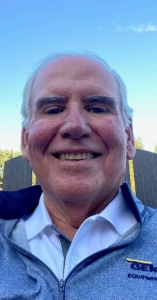The future is now
In his guest blog this week, Ryszard Chciuk reflects upon his years with his service management team and considers that the future is now.
Once upon a time, I and my new service management team decided to create the best after sales organization in our country. I am not going to tell you how to build something from scratch. It is about the most important thing: how to explain to all members of a team what we are going to achieve together within the next several years. Some authors of books for managers call it vision. I have a problem with this word because in my native language we sometimes have visions, usually after too many drinks. Also, I don’t recommend using that word while speaking to the front-line people. Instead of vision, I talked to them about our common long-term goals. Why? Terms like vision, mission, values and strategy are irritating to many managers and plenty of employees. They become anxious about the future of their companies – and mostly they are right – when the highest management starts to talk about new market strategy based on new values, new vision and new mission. One can ask oneself: in the end, what’s it really all about? Is it about closing our decent business? Contrary to myself, in the story for English speaking readers I will use the word vision. Maybe you were luckier in your encounters with the prophets without true vision.
At that time, our parent company vision was To be the Model of Excellence and Care. Sounds nice, but how to present it to newly employed field technicians, mechanics, service supervisors, as well as parts and administration personnel? Unfortunately, the vision of our corporation was not translated into more specific version, understandable for all employees of the dealership.
My service team decided to work out the vision just for ourselves. Why?
I knew my department would grow very fast. It would be no time for an individual coaching. Written procedures did not exist. Creating a company culture was in progress. Our plan to build the best after sales organization could not be executed if we employed people having bad habits. As the result of that assumption, most of my new colleagues were very well educated, but totally inexperienced. And even worse, they were to work in the field, mostly out of a supervisor’s eye. They were allowed to make mistakes, if they did it with good intentions. How were they to discern what was right and what was wrong? They needed to know the main, long term goals of the after sales department, our vision of our future.
N.B. Few years after we implemented the idea of vision, I found a confirmation that it was a proper approach. In his Strategy Navigation-A Systems Approach to Business Strategy, H. William Dettmer mentioned: … the military has learned an important lesson that most businesses haven’t: how to shorten response time to unexpected developments and build flexibility into the system. They do this by avoiding detailed policy and guidance from the highest levels – micromanagement – concentrating instead on establishing the overall objectives and rules of engagement alone.
How did we achieve it?
To propose and discuss long terms goals for a team, its members would have to find the answers to the following questions:
- Which long term goals of our dealership and corporation am I able to support as a member of the after sales department?
- What is my greatest professional dream?
- What would make me proud in 3-5 years from now?
- What are the main competencies of our team?
- What differences do we have and what will make our team different from the competitors in the future?
First draft of our vision was agreed by the core members of the service management team. Then it was discussed in details, during Q&A sessions with all of our people. We did it because people are more eager to follow the agreed rules if they had a chance to define them.
Finally, our after-sales department vision was as follows:
- most of our customers recognize us as the best construction equipment service in the country
- we generate profit which covers cost of employees’ personal development and provides financial liquidity of our dealership, when the demand for new machines is reduced significantly
- the best employees and the best suppliers want to work for us or collaborate with our team
- we are always prepared for unexpected changes and we implement them in the proper time.
Please notice: those four sentences are written in the present tense, because the future is just now. Every day, each worker can assess approximately how far we are from our goals. Every month or every quarter, employees get more accurate data about the performance of their small teams in that matter. It happens if you have worked out balanced scorecards for teams and single employees.
Next time, I will tell you, what it was for.







